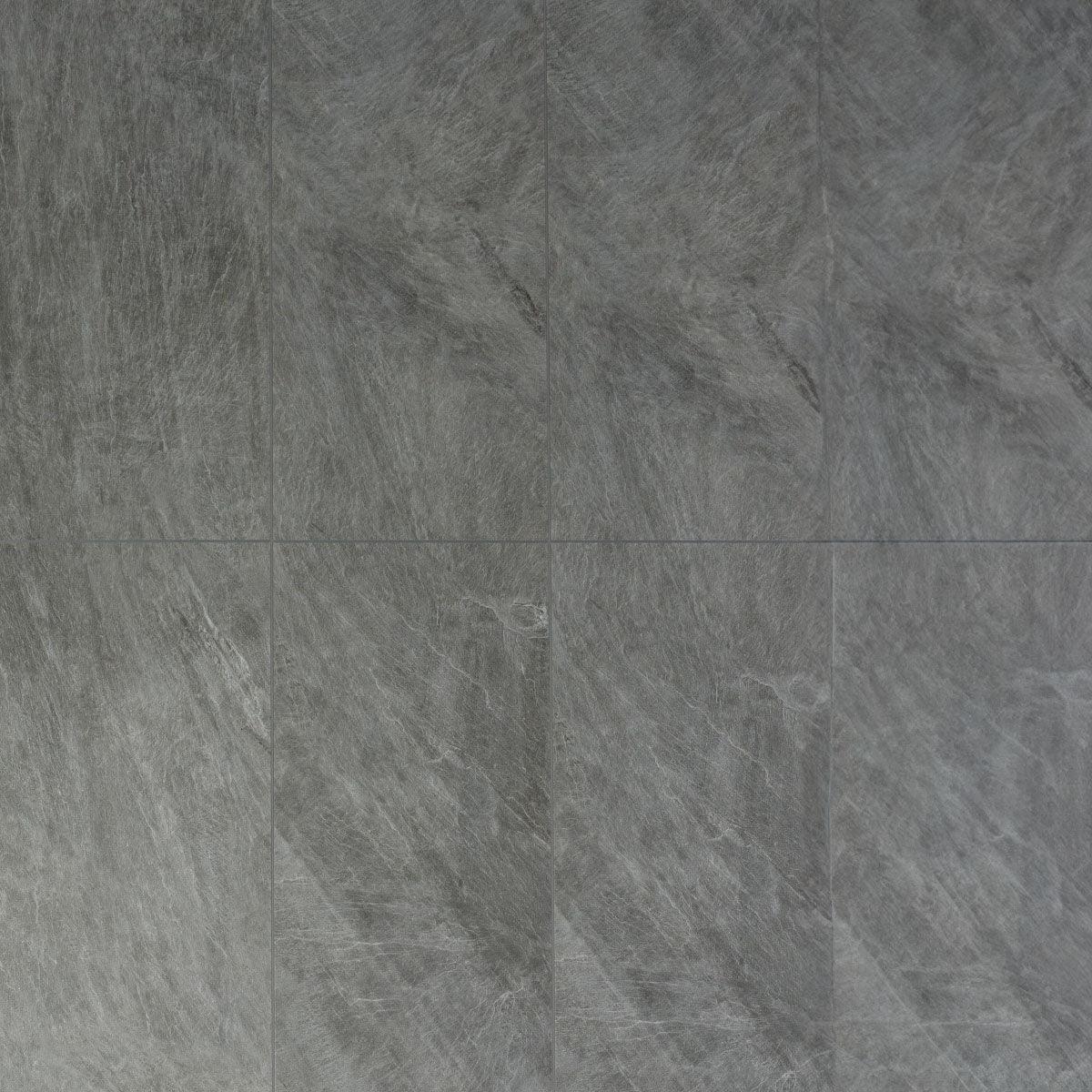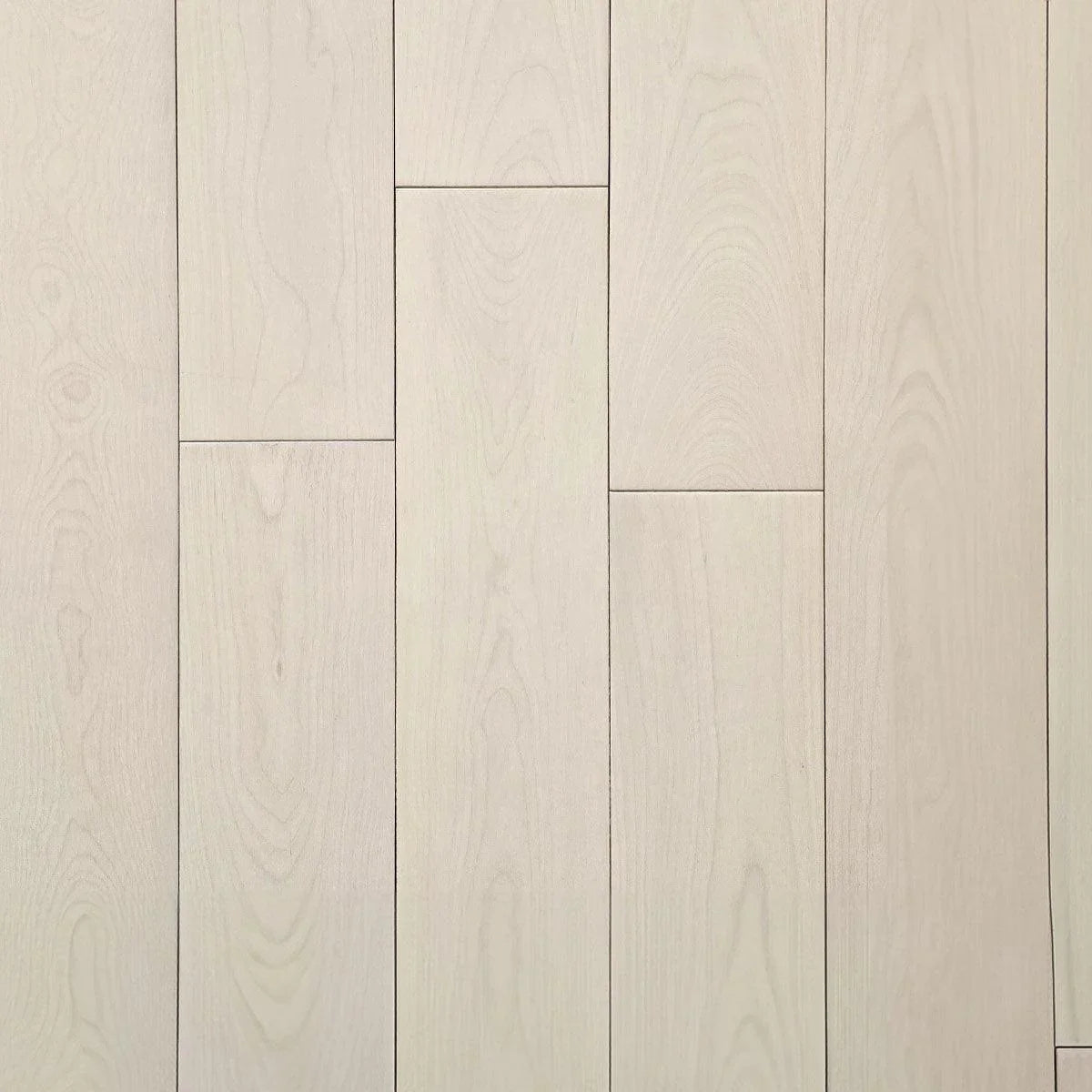Introduction
Welcome to our comprehensive guide on selecting the ideal flooring for your living room—a space where comfort meets style, and every detail counts. Whether you're renovating or choosing flooring for a new home, the decision you make will significantly impact your living area's ambiance and functionality. Flooring is not just a backdrop; it's a central component that affects the aesthetics and the feel of your home. In this guide, we'll explore how different flooring options can enhance both the appearance and the atmosphere of your living room, ensuring that it's not only inviting but also a reflection of your personal style and practical needs.
Importance of Choosing the Right Flooring
- Impact on Ambiance: The flooring you choose sets the tone for the rest of your living room. It can make a space feel warmer, larger, more luxurious, or more casual. Understanding the psychological and visual impacts of flooring can help you create the desired mood and style.
- Practical Considerations: Beyond looks, flooring must handle the wear and tear of daily life. Choosing the right material can determine how your living space ages with time and use. We'll delve into how different materials can cater to varying levels of household activity, ensuring your space not only looks great but lasts.
Understanding Different Flooring Materials
Selecting the right flooring is more than just a stylistic choice; it's a decision that affects the daily use and upkeep of your living room. Here’s an in-depth look at the most popular flooring materials, their benefits, drawbacks, and what makes each unique:
1. Hardwood Flooring
Types Available:
-
-
Solid Hardwood Flooring: This type is crafted from single pieces of wood, allowing for a classic and elegant look. A key advantage of solid hardwood flooring is its longevity; it can be sanded and refinished multiple times, which means it can be restored to look new even after years of wear.
-
Engineered Hardwood Flooring: Engineered hardwood flooring consists of a top layer of real hardwood veneer adhered to several layers of other wood types, typically plywood, beneath. This construction provides enhanced stability and resistance to changes in humidity and temperature, making it a versatile option for almost any room in your home.
-
Exotic Hardwood Flooring: Exotic Flooring, such as Brazilian cherry, teak, and mahogany, are prized for their distinctive colors and unique grain patterns. These woods can offer a striking and luxurious appearance that sets your floors apart from more traditional options.
-
Pros: Timeless beauty adds value to homes, various wood choices to match any decor.
Cons: Susceptible to moisture and scratches, can be costly, especially exotic flooring varieties.
Maintenance: Requires polishing and occasional refinishing; needs to be kept dry and clean to avoid damage.
Best for: Traditional homes looking for a durable and classic floor, suitable for living areas away from moisture.
2. Laminate Flooring
Types Available:
-
- Textured Laminate: Mimics the feel of real wood grain.
- Smooth Laminate: Offers a sleek, modern appearance.
- High-Gloss Laminate: Shiny finish that resembles polished stone or lacquered wood.
Pros: Affordable, durable, easy to install and maintain, diverse style options.
Cons: Not as long-lasting as hardwood, potential for water damage, cannot be refinished.
Maintenance: Maintaining laminate flooring is straightforward: regular sweeping and mild mopping will keep it in top condition. It’s important to avoid letting water sit on the surface to prevent potential water damage.
Best for: Families needing a cost-effective, attractive floor with reasonable durability.
3. Vinyl Flooring
Types Available:
-
-
Luxury Vinyl Tile (LVT): This type features a high-quality photographic layer that accurately mimics the textures of natural materials like wood and stone. LVT is renowned for its realistic appearance and durability.
-
Vinyl Sheets: These are best suited for large, uninterrupted spaces. Vinyl sheets provide a seamless look and are relatively easy to install, making them a practical choice for bigger areas.
-
Waterproof Vinyl Planks: Perfect for areas exposed to high moisture levels, such as bathrooms and kitchens. These planks are designed to resist water damage, ensuring longevity and maintaining their aesthetic appeal even in damp environments.
-
Pros: Water-resistant, resilient against staining and scratches, versatile design options.
Cons: Quality varies widely; lower-end vinyl may degrade faster.
Maintenance: Regular cleaning with a mop; more resistant to moisture and stains.
Best for: Active households, especially with pets and children, in any area of the home.
4. Tile Flooring
Types Available:
-
-
Ceramic Tile Flooring: This type is made from clay and other minerals that are shaped and then fired in a kiln. Ceramic tile is versatile and widely used in homes for its durability and range of styles.
-
Porcelain Tile Flooring: Known for being denser and less porous than ceramic tile, porcelain tile offers enhanced durability and moisture resistance, making it ideal for high-traffic areas or rooms exposed to wet conditions.
-
Natural Stone Tile Flooring: This category includes materials like marble, granite, slate, and others, each known for its luxury and unique visual appeal. Natural stone tile adds an element of sophistication and distinctiveness to any space.
-
Pros: Highly durable, water-resistant, offers diverse design choices.
Cons: Cold and hard underfoot, challenging installation, requires sealing especially for natural stone.
Maintenance: Easy to clean; grout needs regular sealing and cleaning to prevent staining.
Best for: High traffic areas and homes in warmer climates or with radiant heating systems.
5. Carpet
Types Available:
-
- Cut Pile: Includes plush, Saxony, and frieze styles; fibers cut at the ends.
- Loop Pile: Loops are maintained; includes Berber.
- Cut-Loop: Combination of cut and loop fibers for varied texture.
Pros: Comfortable, reduces noise, provides insulation against cold.
Cons: Can harbor allergens and stains; not suitable for high-moisture areas.
Maintenance: Requires vacuuming and periodic professional cleaning to maintain appearance and hygiene.
Best for: Bedrooms and low-traffic living areas where comfort is a priority.
Each of these options comes with unique characteristics that make them suitable for different living environments and styles. Next, we'll explore how to balance durability with aesthetic appeal to find the perfect match for your living room
Durability Meets Style: Finding the Perfect Balance for Your Living Room
Choosing the right flooring for your living room involves finding a delicate balance between lasting durability and visual appeal. Explore these versatile options tailored to meet both needs:
- Hardwood Flooring: Ideal for its long-lasting nature and classic elegance, hardwood enhances any living space with its variety of shades and finishes. Whether you prefer a rustic or a polished look, hardwood floors are a durable choice that complements diverse decorating styles and adds a sense of spaciousness.
- Laminate Flooring: For those who admire the beauty of hardwood but require something more resilient, laminate flooring is an excellent option. It’s designed to resist scratches and wear, making it perfect for high-traffic areas. With a wide range of designs, laminate offers the appearance of real wood and is easy to maintain.
- Vinyl Flooring: Vinyl is the go-to for families that need robust yet stylish flooring. It mimics the look of more costly materials like hardwood and stone but is more practical for busy households. With its superior durability and ease of maintenance, vinyl flooring ensures your living room is both inviting and well-equipped to handle daily activity.
- Tile Flooring: Known for its robustness, tile offers limitless styling options, from sleek ceramic to luxurious porcelain or natural stone. It is incredibly durable and simple to clean, making it suitable for adding a touch of elegance to your living room.
- Carpet: Soft and inviting, carpet remains a popular choice for comfort-seeking homeowners. Available in an array of colors and textures, it's perfect for creating a cozy living room atmosphere. Modern carpets are designed to be more durable and easier to clean, fitting well in spaces used by families and pets.
Aesthetic Appeal: What's Your Living Room's Vibe?
The flooring you choose plays a crucial role in defining the atmosphere of your living room. Here’s how to align your flooring with the desired aesthetic:
- Soft Natural Tones: If you prefer a tranquil and welcoming environment, opt for flooring that offers soft, natural hues. Light-colored oak or ash can brighten a space while maintaining an understated elegance. These wood options bring a peaceful and airy vibe to any living room, making it feel more open and relaxed.
- Polished Marble Tiles: For those aiming for a touch of luxury, polished marble tiles are unparalleled. They provide a sophisticated foundation for your living room, making it appear more refined and expansive. Marble is particularly effective in enhancing natural light, adding a radiant quality to the space.
- Rich, Dark Woods: To evoke a sense of grandeur and warmth, choose darker wood tones like walnut or mahogany. These woods are perfect for creating a statement floor that commands attention while providing a cozy, inviting atmosphere. They work well in larger spaces where their rich colors can truly shine without overwhelming the senses.
By carefully selecting the flooring that aligns with your personal style and the functional needs of your living space, you can create a living room that is both beautiful and practical. Whether you opt for the natural elegance of wood or the luxurious sheen of marble, your flooring choice can transform your living room into a stunning and welcoming space.
Cost Considerations
When planning to install new flooring, understanding the cost implications of different materials is crucial. Here's an overview of typical price ranges for various flooring options and their installation costs:
Typical Cost Ranges for Various Flooring Materials
- Hardwood Flooring
- Cost Range: Hardwood is usually on the pricier side, with materials costing between $5 and $15 per square foot, depending on the wood type.
- Installation Costs: Adding installation, expenses can rise by an additional $3 to $8 per square foot.
- Laminate Flooring
- Cost Range: Laminate is a more economical alternative to hardwood, with prices ranging from $2 to $8 per square foot.
- Installation Costs: Installation is relatively less costly, generally between $2 and $5 per square foot.
- Vinyl Flooring
- Cost Range: Vinyl flooring varies significantly in price, from as low as $1 to as high as $12 per square foot, with luxury vinyl tiles at the upper end of this spectrum.
- Installation Costs: Installation fees for vinyl are modest, typically ranging from $1 to $4 per square foot.
- Tile Flooring
- Cost Range: The cost for ceramic tiles starts at about $1 per square foot and can go up to $15, with porcelain and natural stone tiles often costing more.
- Installation Costs: Tile installation tends to be more labor-intensive, hence more expensive, usually ranging significantly based on the material and project complexity.
- Carpet
- Cost Range: Carpet is generally the most budget-friendly flooring option, costing between $1 and $5 per square foot.
- Installation Costs: Installation is comparatively cheaper, costing about $0.50 to $1 per square foot.
Summary Table:
| Flooring Type | Material Cost per Sq Ft | Installation Cost per Sq Ft |
| Hardwood | $5 - $15 | $3 - $8 |
| Laminate | $2 - $8 | $2 - $5 |
| Vinyl | $1 - $12 | $1 - $4 |
| Tile | $1 - $15 | Varies |
| Carpet | $1 - $5 | $0.50 - $1 |
This table and breakdown offer a clear guide to help you budget for your new flooring, allowing you to make an informed choice based on cost efficiency and aesthetic preferences.
Tips for Budgeting Your Flooring Project
- Materials: Always start with a clear estimate of the flooring material costs by measuring your space accurately.
- Installation: Include costs for underlayment, delivery, and any necessary subfloor preparation. Labor costs can vary widely, so get several estimates.
- Removal and Disposal: Don’t forget to account for the cost of removing and disposing of your old flooring, if applicable.
- Plan for Unexpected Expenses: Set aside an additional 10-20% of your total budget to cover unexpected costs such as additional subfloor preparation, which is often uncovered during the installation process.
- Consider Long-Term Value: While it may be tempting to choose the least expensive option, consider the longevity and durability of the flooring. Investing more upfront might save money in the long run due to reduced replacement and maintenance costs.
- Hidden Costs in Flooring Projects:
-
- Subfloor Repairs: If the existing subfloor is damaged or uneven, it may need to be repaired or replaced, which can significantly increase the project cost.
- Transitions and Trim: Adding transitions between different types of flooring or finishing the edges of the room with baseboards or trim can add to the overall cost
- Delivery Fees: Large orders of flooring material can incur substantial delivery fees, which are not always included in the initial quotes.
By thoroughly understanding and planning for the various costs associated with new flooring, you can ensure that your project stays within budget and avoids any unpleasant financial surprises.

SPC Luxury Vinyl TrueGrout Tile - Thunder Grey - 5 mm

Honey Maple Solid Hardwood Flooring - Whitehaven Beach - 4 3/4"

7" Waterproof Luxury Vinyl Flooring - Narcissa

24" x 24" Porcelain Tile - Luxor Night

SPC Vinyl Click Flooring with Underpad - Galliano - 6mm
Maintenance and Upkeep: Simplifying Your Lifestyle
Ensuring your living room flooring remains in top condition is crucial for both aesthetics and longevity. This section outlines the maintenance practices for popular living room flooring types, offering practical advice for easy upkeep.
Cleaning and Maintenance Requirements for Each Type of Flooring
Hardwood Flooring:
- Cleaning: Regularly sweep or vacuum to remove dust and debris. Use a wood-specific cleaner with a damp mop for deeper cleaning, avoiding excess moisture.
- Maintenance: Place rugs in high-traffic areas to minimize wear. Periodically check for scratches or dull areas and consider refinishing every 5-10 years to rejuvenate the surface.
Laminate Flooring:
- Cleaning: Dust or vacuum regularly using a soft brush attachment. Wipe up spills promptly to prevent water damage. Clean using a slightly damp mop or a laminate-specific cleaning solution.
- Maintenance: Avoid using polish or wax. Place protective pads under heavy furniture to prevent indentation and scratching.
Vinyl Flooring:
- Cleaning: Sweep frequently and clean spills immediately to prevent stains. Use mild detergent and a damp mop for routine cleaning.
- Maintenance: Although vinyl is durable, prevent dents and tears by using floor protectors under heavy furniture and avoiding sharp objects.
Tile Flooring:
- Cleaning: Sweep or vacuum to remove loose dirt. Mop with a mild detergent solution, focusing on tile and grout to avoid grime buildup.
- Maintenance: Apply sealer to grout lines annually to prevent staining and moisture penetration. Replace any cracked or chipped tiles to maintain the integrity and appearance of the floor.
Carpet:
- Cleaning: Vacuum weekly or more frequently in high-traffic areas to prevent soil accumulation. Spot clean stains immediately with appropriate carpet cleaners.
- Maintenance: Schedule professional carpet cleaning every 12-18 months, or more often if needed, to deep clean and remove embedded dirt and allergens.
Strategies for Keeping Your Floors Looking New Longer
Preventive Measures:
- Entry Mats: Utilize mats at all entrances to reduce the amount of dirt and debris tracked onto your living room floors.
- Furniture Pads: Use felt pads under the legs of furniture to avoid scratches and indentations on hard surfaces.
- Regular Inspections: Regularly inspect for any signs of wear or damage and address them promptly to avoid exacerbating the issue.
Lifestyle Adjustments:
- Shoes Off Policy: Implement a no-shoes policy in the living room to keep floors cleaner and reduce surface wear.
- Manage Sun Exposure: Use blinds or curtains to protect flooring from prolonged sun exposure, which can fade and damage certain types of flooring materials.
Following these maintenance tips will help keep your living room flooring in pristine condition, enhancing both the room's functionality and its aesthetic appeal.
Impact of Flooring on Room Size Perception:
Choosing the right flooring can significantly influence how spacious or cozy a room feels. Light-colored floors, such as beige, soft gray, or light oak, tend to open up a space, making it appear larger and more airy. This is ideal for smaller rooms or spaces that you want to feel more expansive. In contrast, darker floors, such as espresso or black walnut, add warmth and a sense of intimacy, making them perfect for larger rooms that you wish to feel more enclosed and cozy.
Strategic Flooring Layouts to Modify Room Ambiance
The layout and direction in which the flooring is installed can also impact the perception of space. Diagonal floor layouts can create an illusion of width, making a room appear broader. Meanwhile, using the same flooring across multiple rooms can visually extend the space, making your home appear larger and more unified.
Latest Trends in Living Room Flooring
Today’s flooring options are innovatively designed to enhance both the visual appeal and usability of your living space. Key trends include:
- Luxury Vinyl Tile (LVT): Celebrated for its realistic mimicry of hardwood and stone, LVT offers the elegance of natural materials without the hefty price tag or high maintenance.
- High-Quality Laminate: Known for its resilience and wide range of designs, laminate flooring provides a versatile solution that adapts to any decorating style, from classic to contemporary.
Ensuring Timeless Style with Thoughtful Flooring Choices:
Choosing the right flooring is crucial for aligning with your home’s architectural style while ensuring long-lasting appeal:
- For Traditional Homes: Opt for classic materials such as hardwood or sophisticated laminate. These choices complement the historical character and add warmth to your living space.
- For Modern Homes: Consider contemporary tiles or stained concrete. These materials enhance modern aesthetics with their sleek, clean lines and unique textures.
By integrating these flooring trends thoughtfully, you can create a living space that is both stylish and enduring. This strategic approach helps maintain a timeless elegance in your home, ensuring that your floors look great not only today but for years to come.
Making the Decision: Tips for Choosing the Right Flooring
When selecting your living room flooring, consider the following:
- Durability and Maintenance: Opt for materials that can withstand your household’s traffic and are easy to clean.
- Budget: Include all costs in your planning—material, installation, and future maintenance.
- Aesthetic and Function: Ensure the flooring matches your personal style and meets your practical needs.
Conclusion:
Selecting the perfect flooring for your living room involves careful consideration of both style and functionality. The ideal choice should enhance your current lifestyle while remaining adaptable for future changes in taste and use. With proper selection, your flooring can offer both comfort and lasting beauty, elevating the everyday experience of your living space.
For personalized advice and a selection of premium flooring options, Golden Elite Deco is your trusted partner. As a leading retailer in the flooring industry, we are committed to helping you find flooring solutions that fit both your aesthetic preferences and functional needs. Visit us in-store or book an appointment online to discover how our expert guidance and high-quality products can enhance your home.



